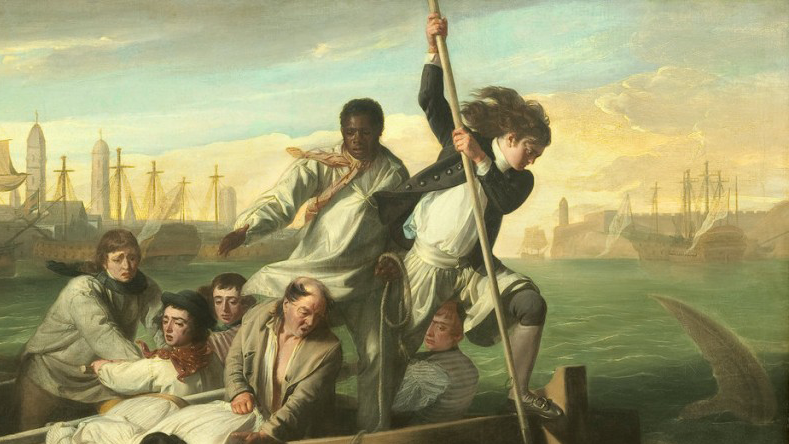Watson and the Shark’s exhibition at the Royal Academy in 1778 generated a sensation, partly because such a grisly subject was an absolute novelty. In 1749, 14–year–old Brook Watson had been attacked by a shark while swimming in Havana Harbor. Copley’s pictorial account of the traumatic ordeal shows nine seamen rushing to help the boy, while the bloody water proves he has just lost his right foot. To lend equal believability to the setting Copley, who had never visited the Caribbean, consulted maps and prints of Cuba.
The rescuers’ anxious expressions and actions reveal both concern for their thrashing companion and a growing awareness of their own peril. Time stands still as the viewer is forced to ponder Watson’s fate. Miraculously, he was saved from almost certain death and went on to become a successful British merchant and politician.
Although Copley underscored the scene’s tension and immediacy, the seemingly spontaneous poses actually were based on art historical precedents. The harpooner’s pose, for example, recalls Raphael’s altarpiece of the Archangel Michael using a spear to drive Satan out of heaven. The oil painting’s enormous acclaim ensured Copley’s appointment to the prestigious Royal Academy, and he earned a fortune selling engravings of its design.











